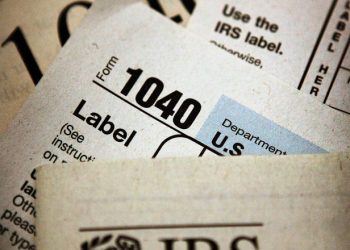The good news: Most taxpayers pay what they owe in full and on time. A report released by the IRS indicates that the nation’s tax compliance rate is holding at 85%, more or less the same as in prior years.
The not-so-good news: New tax gap projections for tax years 2020 and 2021 show the projected gross tax gap increased to $688 billion in tax year 2021, a significant jump from previous estimates.
Tax Gap Defined
The tax gap refers to the difference between the amount of taxes owed to the government as compared to what the government actually collects. The tax gap can be further broken down into two pieces: the gross tax gap and the net tax gap.
The gross tax gap is the amount of true tax liability that is not paid voluntarily and timely. The net tax gap is the amount between the gross tax gap and tax that will eventually be paid late or as a result of IRS enforcement activities.
Latest Data
The IRS estimates the total true tax liability for 2021 to be $4.565 trillion. Of that, $3.877 trillion was paid voluntarily and one time. That difference—$688 billion—represents the tax gap.
The tax gap breaks down into three pieces: non-filing (tax not paid on time by those who do not file on time, $77 billion), underreporting (tax understated on timely filed returns, $542 billion), and underpayment (tax that was reported on time, but not paid on time, $68 billion).
The IRS still hopes to collect an additional $63 billion on tax year 2021 returns through late payments and IRS enforcement efforts. That results in a projected net tax gap of $625 billion.
The specific numbers, by type of tax, look like this:
- Individual income tax: $475 billion
- Corporation income tax: $37 billion
- Employment tax: $112 billion
- Estate and excise tax: $1 billion
According to the IRS, the new estimate reflects a rise of more than $192 billion from the prior estimates for tax years 2014-2016 and a rise of $138 billion from the revised projections for tax years 2017-2019. This marks the first year tax gap projections have been provided for single tax years and also marks the beginning of tax gap updates on an annual basis.
“This increase in the tax gap underscores the importance of increased IRS compliance efforts on key areas,” said IRS Commissioner Danny Werfel. “With the help of Inflation Reduction Act funding, we are adding focus and resources to areas of compliance concern, including high-income and high-wealth individuals, partnerships and corporations. These steps are urgent in many ways, including adding more fairness to the tax system, protecting those who pay their taxes and working to combat the tax gap.”
Not All Noncompliance
The IRS notes that the tax gap estimates and projections cannot fully account for all types of noncompliance. For example, it may be difficult to assign dollar figures to noncompliance related to offshore activities or issues involving digital assets and cryptocurrency, as well as corporate income tax, income from flow-through entities, and illegal activities because data is lacking. And, the IRS notes that the tax gap associated with illegal activities is outside the scope of tax gap estimation for a good reason—the government’s objective is to eliminate those activities, which would eliminate any associated tax.
Fixing the Problem
According to the IRS, tax gap studies have consistently demonstrated that third-party income reporting significantly raises voluntary compliance with tax laws. For example, computerized document matching in the early 1980s—where the IRS matched data reported by third-party financial institutions to data reported by taxpayers—significantly reduced underreporting of dividend and interest income. And the requirement that taxpayers supply Social Security numbers for dependent children resulted in marked differences in the numbers of dependents claimed on returns.
Additional changes to reporting requirements, including those related to online and cryptocurrency assets, should be expected to boost those numbers.
Voluntary compliance rises even higher when income payments are also subject to withholding. That’s the number on your Form W-2. Expecting taxpayers to remit voluntarily without withholding (think about your Form 1099) historically results in a lower level of compliance. For example, the data from 2014–2016 shows that misreporting of wages subject to substantial information and withholding (again, think Form W-2) is 1% compared to 55% for nonfarm proprietor income, which is subject to little or no information reporting.
Inflation Reduction Act resources—the extra funding provided by Congress—will also allow the IRS to help improve voluntary compliance by improving taxpayer services and offering new technology tools for additional compliance work. In 2022, the latest year for which data is available, the IRS collected more than $4.9 trillion in taxes, penalties, interest, and user fees.
Liability Is Growing
While it’s true that voluntary compliance is in line with recent levels, the overall dollar numbers owed have gone up. Between tax years 2014-2016 and tax year 2021, the estimated tax liability increased by about 38%, roughly the same increase as the gross and net tax gaps. Much of these increases in tax liability and the tax gap can be attributed to economic growth.
Why Does It Matter?
The voluntary compliance rate can be a fundamental issue of fairness. There’s a sense that we should all be doing our part—that’s why high-profile and newsy tax avoidance cases are so public.
But there’s also a practical, dollar-based reason to encourage compliance: according to the IRS, a one-percentage-point increase in voluntary compliance would bring in about $46 billion in additional tax receipts.
More Info
Federal Tax Compliance Research: Tax Gap Projections for Tax Years 2020 and 2021, Pub. 5869
Read the full article here







